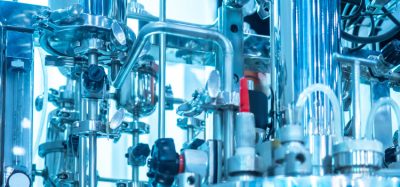QbD and PAT – 2008 is the year it goes mainstream
Posted: 7 April 2008 | Alex Brindle, Specialist, Business Consulting, NNE Pharma Plan | No comments yet
Since the FDA revolutionary white papers[1,2] in 2004, the industry has talked non-stop about the potential of PAT (Process Analytical Technology) and more recently, QbD (Quality by Design). These topics have found regular spots in conferences, press and internal company discussions. It has been widely stated3 that the benefits are potentially huge and that this way of developing and manufacturing life science products offers the opportunity to ‘catch up’ with other industries such as food and electronics, which have their processes down to a ‘science’ rather than an ‘art’.
Since the FDA revolutionary white papers[1,2] in 2004, the industry has talked non-stop about the potential of PAT (Process Analytical Technology) and more recently, QbD (Quality by Design). These topics have found regular spots in conferences, press and internal company discussions. It has been widely stated3 that the benefits are potentially huge and that this way of developing and manufacturing life science products offers the opportunity to ‘catch up’ with other industries such as food and electronics, which have their processes down to a ‘science’ rather than an ‘art’.
Since the FDA revolutionary white papers[1,2] in 2004, the industry has talked non-stop about the potential of PAT (Process Analytical Technology) and more recently, QbD (Quality by Design). These topics have found regular spots in conferences, press and internal company discussions. It has been widely stated3 that the benefits are potentially huge and that this way of developing and manufacturing life science products offers the opportunity to ‘catch up’ with other industries such as food and electronics, which have their processes down to a ‘science’ rather than an ‘art’.
Despite these touted advantages, the take up of the tools and technology has been relatively slow. Yes, submissions, under the new framework are starting to arrive, but it has been surprising to see the slow conversion with the theoretical amount of financial savings on offer. The reasons for this slow uptake are complex and will be discussed shortly. The prominent thing to note is that, until 2007, there was still a lot of discussion of ‘why to’ or ‘how to’ pursue PAT and QbD initiatives.
So why was the uptake slow considering the potentially huge upside?
Perhaps one of the key reasons as to why change has been slow is that the people who started out to champion PAT and QbD within organisations were the actual scientists. Consequently, there has been an emphasis on the scientific benefits of pursuing PAT and QbD over the business benefits. There have been numerous examples of ‘business cases’ for PAT & QbD projects that talk a lot about process understanding with some vague benefits attached such as reduced scrap or increased equipment utilisation.
There are many factors that can be used in a business case and this article is not suggesting there is only one way to obtain funding for PAT and QbD projects. However, there is one language that is spoken by all functions inside an organisation; finance. The more that the benefits and costs of pursuing a project can be quantified in financial terms, the more simple it becomes to make a decision to pursue that project.
The finance industry is aware of this, which is why virtually every bank savings account, unit trust, property fund or other investment vehicle, gives a clear indication of what investment is needed (see Figure 1), what return on investment can be expected, what the costs are and what risks are involved (though it might be strongly debated whether risk is properly conveyed to the public).
The same tactics are equally relevant to promote internal PAT and QbD projects within a life science organisation. Converting vague benefits into real cost savings and estimating the true cost of a project, allows the investment and return on investment to be calculated. Quantifying risk and other soft factors that cannot be converted to financials gives additional information.
There are financial models such as return on investment (ROI), Net Present Value (NPV) or Full Manufacturing Cost (FMC) (3) that lend themselves quite nicely to the situations often found in life science development and manufacturing. These models are simple, easy to learn and can be found in virtually any basic management accounting or MBA study text4.
Despite, some poor ‘internal’ selling of PAT and QbD projects in the past it appears that, finally, 2007 saw a significant increase in the amount of well documented and widely acclaimed success stories. Technical applications were considered as part of the wider picture (for example, considering a process analytical tool as to how it can affect the control strategy of the whole manufacturing facility). The ability to promote PAT and QbD as something that is here to stay got a whole lot stronger and a lot of the critics have melded into the background (for now at least).
The year 2008 is predicted to be when all of these projects go completely mainstream on a large scale, as organisations really start to implement the technology, tools and working practices. PAT and QbD will really begin to move from selected scientific projects to a normal way of working for certain products and processes in the development and manufacture of drugs.
This is not a moment too soon when considering the wider state of the industry. Class action lawsuits, increasingly expensive and difficult clinical trials and, perhaps most crucially, a fairly dry pipeline of drugs have got big pharma concerned. Arguably, manufacturing in Europe and the USA is one of the functions that has been hardest hit, as facilities are sold to third parties or singled out for shutdown. The flipside to this is the continued rapid growth of manufacturing in developing countries where building new facilities can cost down to half of what they do in the US and Europe and workers salaries are a fraction.
PAT & QbD can strike some balance here as they offer the opportunity to radically reduce manufacturing costs over the lifecycle of drug production.
PAT and QbD have been talked about for years. 2008 is the year to deliver on these projects and this way of working will be one of the key factors that influence the success or stagnation of entire organisations over the coming years.
References
- PAT – A Framework for Innovative Pharmaceutical Development, Manufacturing, and Quality Assurance, FDA (2004).
- US Food and Drug Administration, Innovation and Continuous Improvement in Pharmaceutical Manufacuring – Pharmaceutical cGMPs for the 21st Century, FDA White Paper 2004.
- http://news-info.wustl.edu/tips/page/ normal/7912.html
- Accounting for Managers, MBA Module 1, University of Leicester
Alex Brindle
Specialist, Business Consulting, NNE Pharma Plan
Dr Alex Brindle holds a BSc in chemistry, a MSc in analytical science, and a PhD in process engineering. He has ten years of experience at the interface between analytical science, materials science, and processing to characterise processes and products. Dr Brindle has experience in petrochemicals, consumer healthcare and life sciences (in both developments and manufacturing), and has worked with process understanding and PAT at AstraZeneca and GlaxoSmithKline, before joining NNE Pharmaplan. Since joining NNE Pharmaplan, he has been involved in projects for PAT, facility design and investment analysis.
Issue
Related topics
Process Analytical Technologies (PAT), Quality by Design (QbD)









